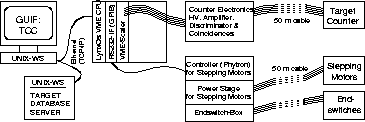
Figure 10: Setup of the Target Control System - TaCoS.
The target steering is based on direct measured rates and rather simple algorithm. To increase the rate the target moves in, to reduce the rate it moves out. Fig. 10 shows a sketch of the hardware setup.

Figure 10: Setup of the
Target Control System - TaCoS.
The steering code, implemented as a final state machine,
handles fast beam finding, rate stabilization and equalization on several wires
and it has to react very fast on emergencies. Security and
to avoid any harm to the beam or other detectors is the highest
priority in the steering concept. Therefore
several levels of emergencies are implemented.
The main steering takes place in a 10 Hz loop;
rates are read out and the target movement is calculated, taking into
account emergency conditions, the history and the slope of the rates.
Close to the beam already a ![]() (10
(10 ![]() m) step
changes the rate by a factor of two.
The equalization of individual wire contributions is just in a
starting process. The test setup lacks from fast
and significant measurements - but integrated low statistic devices shows
already now very promising results. Finally the second level trigger
will analyze vertex information of several kHz of events
and provide the information to the target steering.
Last but not least the target control has to be done by lot of different
peoples on shift, i.e. it has to be very reliable and easy to run.
TCC - the Target Control Center provides
therefore an easy to use graphical user interface.
m) step
changes the rate by a factor of two.
The equalization of individual wire contributions is just in a
starting process. The test setup lacks from fast
and significant measurements - but integrated low statistic devices shows
already now very promising results. Finally the second level trigger
will analyze vertex information of several kHz of events
and provide the information to the target steering.
Last but not least the target control has to be done by lot of different
peoples on shift, i.e. it has to be very reliable and easy to run.
TCC - the Target Control Center provides
therefore an easy to use graphical user interface.